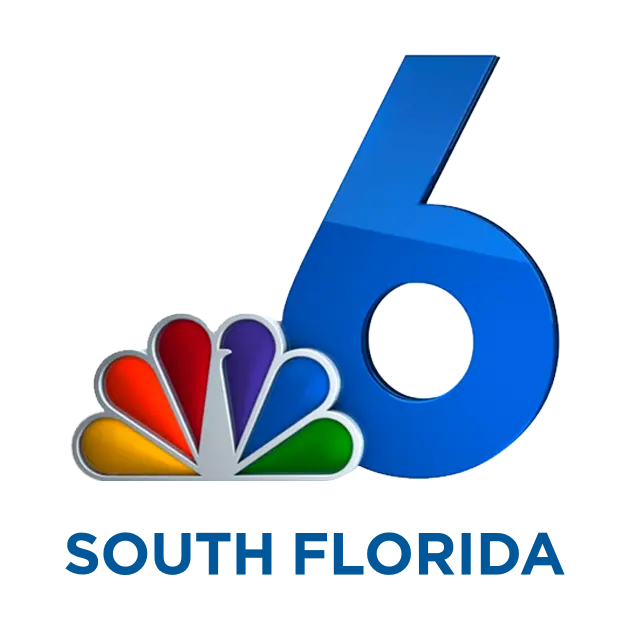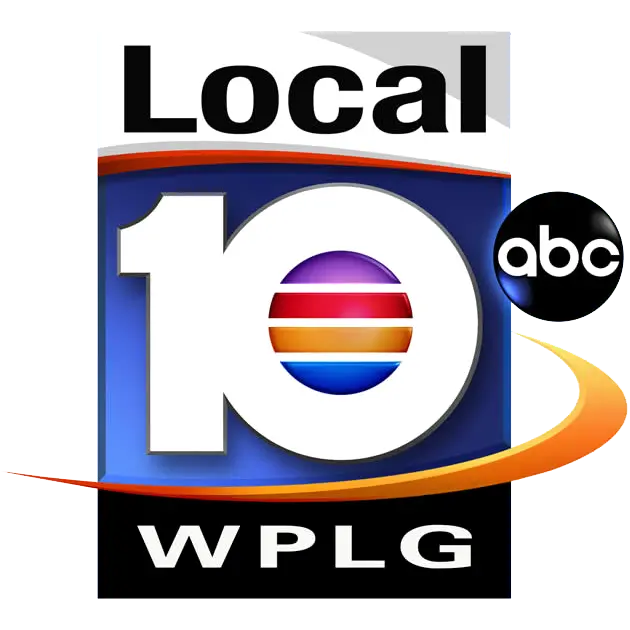















For people aged 65 and above in Florida, falls are the leading cause of fatal and non-fatal injuries. However, they aren’t the only ones vulnerable to slip-and-fall accidents. From toddlers to seniors, anyone can become a slip-and-fall victim in Miami.
According to the National Floor Safety Institute, falls account for over 8 million Emergency Room visits. Injuries from these accidents can be devastating even if they occur at ground level. They can also be life-threatening in some cases.
In other words, Miami is a bustling city with many opportunities for accidents leading to head injuries, torn ligaments and tendons, and even spinal injuries.
Fortunately, Florida law mandates property owners to maintain a hazard-free premise. Therefore, if you suffer a slip-and-fall injury because of their negligence, you can file a claim against them and seek compensation.
However, you’ll need an experienced Miami slip-and-fall lawyer to help you navigate your legal options for maximum compensation.
Slip and fall accidents can cause serious injuries. These accidents occur when you lose your footing on someone else’s property because of a hazard. While they might seem like minor mishaps, these falls can lead to serious injuries.
Things get more complicated if the property owner could have prevented the hazard but didn’t. You have a slip-and-fall lawsuit in that case.
Not all slips and falls lead to major injuries, but any kind counts. These accidents, caused by hazards on someone else’s property, can range from minor bumps to broken bones. While bigger injuries might mean more compensation, minor pain is claimable. The medical bills are proof of financial losses.
Several injuries can result from a slip-and-fall accident, irrespective of location. Ranging from major to minor, these can reduce life quality and cause potential job loss. Common injuries from these mishaps include:
Bumps and Bruises
Bumps and bruises accompany most slip-and-fall accidents. Picture a shopper entering a store on a rainy day. A wet floor causes the shopper’s foot to slip out from under them, leading to a fall with scraped hands and knees.
The pain might be temporary. However, the tenderness can last, causing inconvenience and disruptions.
Soft Tissue Injuries
In a slip-and-fall accident, muscles and ligaments can stretch or tear. Imagine you are walking down poorly lit stairs and missing a step. You twist their ankle during the fall. This can lead to torn ligaments and sprained muscles, making it hard to move.
When ligaments tear, it’s usually from sudden, strong movements that overstretch them. Ligaments connect bones at joints to keep them stable. Depending on the severity of the fall, a tear can range from mild stretching to a complete break.
Muscle sprains happen when muscles get stretched too far. This can happen during a fall or when the body tries to balance itself. It causes pain, swelling, and less flexibility where it’s hurt.
Getting medical help right away is important after an accident like this. Doctors might perform tests like X-rays or MRIs to determine the extent of the damage. Treatment often involves rest, ice, compression, and keeping the hurt area up (called RICE) to reduce swelling. Some torn ligaments and muscles may need surgery.
Recovery can be slow and may require physical therapy to improve strength and mobility. This can cause a lot of pain and difficulty with daily activities.
Legally, it’s crucial to demonstrate that the injuries resulted from negligence, such as unsafe stairs or poor lighting. A slip-and-fall lawyer can gather evidence, negotiate with insurance companies, and ensure fair treatment.
Bone Fractures
Falls, especially from heights, can break bones. Imagine someone at a grocery store reaching for a high shelf when the ladder they’re using collapses.
If they land on an outstretched arm, their wrist can fracture. This injury is quite painful and needs immediate medical care. This includes a cast, physical therapy, and sometimes surgery.
Fractures can vary in severity, from small cracks to complete breaks that need intensive treatment. Recovery can be long and tough, especially for older adults whose bones take longer to heal. They might face a lot of discomfort and struggle with daily tasks during this time. Common bone fractures from a slip and fall accident include:
Property owners must prevent falls by installing strong handrails, non-slip surfaces, and good lighting, especially for older adults. If a fall happens because of negligence, like unsafe ladders or store conditions, they are liable. A slip-and-fall lawyer can gather evidence, handle insurance claims, and fight for fair compensation.
Head Injuries
If your head strikes a hard surface after you slip, it can get injured. The injuries can range from mild concussions to life-threatening situations. Common slip and fall head injuries include:
Immediate medical attention after a head injury is crucial, even for seemingly mild symptoms.
Medical interventions include imaging tests like CT scans and proactive health monitoring. If complications arise, treatment may include rest, pain management, or more intensive therapies.
Recovery from head injuries varies widely depending on their severity. Some people fully recover with time and proper care. However, some may face long-term challenges with memory, concentration, or mood changes.
Back and Neck Injuries
Slip-and-fall accidents can seriously injure the back and neck. The sudden impact can damage discs, muscles, and ligaments. Common slip and fall back injuries include:
Back and neck injuries can become chronic, leading to long-term discomfort and affecting work and daily tasks.
Recovering from back and neck injuries can be lengthy and challenging. Some may need ongoing therapy to regain strength and mobility. Others may experience long-term issues like chronic pain or reduced flexibility.
Property owners must clear walkways, fix broken steps promptly, and ensure proper lighting to prevent slip-and-fall accidents. They are liable for damages if someone is injured in such an accident.
Cuts and Lacerations
These can occur from broken glass, sharp objects on the ground, or rough surfaces during a fall. While seemingly minor, deep cuts can need stitches and leave permanent scars. Common injuries include:
Depending on the severity and location of the personal injury, scarring could be a permanent reminder of the fall. Plus, a damaged nerve can cause lasting pain. The neuropathic pain can reduce sleep efficiency, work productivity, and fatigue.
Recovery from cuts and lacerations may involve follow-up medical appointments. During recovery, patients may experience pain, swelling, and temporary limits in their daily activities.
Dislocations
A fall’s force can cause joints to pop out of place, such as in the shoulder or kneecap. Dislocations are painful and require immediate medical attention or may reset wrong.
Imagine a child playing at a park who trips and falls on the uneven pavement, dislocating their kneecap. It causes severe pain, and the child is unable to walk. Readjustment is painful and a long recovery period and physical therapy may be necessary afterward.
Dental Injuries
Several dental injuries can occur after a slip-and-fall accident. The injury depends on the force and direction of the fall. Common ones include:
While rarely painful, chipped teeth can alter a child’s smile and confidence. A dentist might recommend cosmetic bonding (a tooth-colored resin) for restoration. This includes veneers (thin shells placed over the tooth’s front surface).
Internal Injuries
Slip and fall accidents in Miami can cause internal injuries invisible to the eye, which can be a serious consequence of these accidents. Some of these include:
Emotional Trauma
The physical effects of a slip-and-fall accident are only part of the story. These accidents can also have a significant emotional and psychological impact. Fear of falling, anxiety, and even depression are some potential consequences.
Picture someone who has been injured in a bad slip-and-fall. Now, they may hesitate to walk on uneven surfaces or climb stairs, fearing another accident. Emotional and psychological trauma can be just as serious as physical injuries, and professional help might be necessary.
Miami slip-and-fall attorneys at Madalon Law can determine the extent of these injuries and their effects to recover compensation.
Protect your rights and ensure maximum compensation with help from slip-and-fall attorneys. After a slip-and-fall accident, follow these steps:
Get Immediate Medical Attention
Internal injuries can worsen over time. So, even if you feel fine, you can prevent complications and fatal consequences with immediate medical attention. Doctors can diagnose and treat hidden injuries with X-rays, CT scans, and other diagnostic tools that can reveal internal bleeding. From a legal perspective, a doctor’s report can provide solid evidence to support your claim. The report documents the injury date, location, and nature. Hence, your Miami slip-and-fall attorney can use it to strengthen your case if you pursue legal action against the negligent property owner.
Secure the Accident Scene (if possible)
The slip-and-fall accident scene contains important evidence for your case. So, if you’re able to, gather evidence by:
Report the Accident
The faster you report the accident, the better. It can strengthen your case and prevent liability on your part. Your case will be taken seriously by these people:
Maintain Detailed Records
Documentation is key in any potential legal case. Here’s what you should keep track of:
Consider Legal Options
A slip-and-fall accident can have lasting consequences with deep
Consulting with a personal injury lawyer is recommended if your slip-and-fall resulted in serious injuries or significant financial losses. Here’s why:
Even a clear-cut personal injury claim can fail if you make these mistakes post-accident:
Delaying Medical Attention
A documented medical history can strengthen a slip-and-fall case. Early medical attention establishes a clear link between your injuries and the accident. Delays in medical care raise questions about the severity of your injuries, weakening your case.
Example: Imagine Sarah trips on a broken step at a grocery store and falls, scraping her knee. She doesn’t feel pain initially and decides to wait a few days to see if the scrape heals.
However, the scrape becomes infected, requiring medication and a doctor’s visit. However, she has a weak case. Proving that the slip-and-fall accident at the store caused the scrape and not some other incident afterward weakens her case.
Unclear or Inconsistent Statements
A slip-and-fall accident can be overwhelming. Be honest and consistent in your statements. For example, don’t exaggerate the accident details. Changes between your initial statements and later accounts can raise questions about the claim, damaging your credibility.
Example: Mary tells a security guard she feels fine after a slip-and-fall accident. Later, when contacted by a Miami slip-and-fall attorney, she claimed severe back pain. These conflicting statements could make her injuries doubtful.
Comparative Negligence
Florida courts follow a comparative negligence system. This means that if you’re partially responsible for the accident, your compensation might be reduced as per fault percentage.
Example: While walking on a sidewalk at night, looking at his phone, David doesn’t notice a wet patch. He slips and falls, breaking his wrist. The wet patch might be considered a hazard. However, David’s lack of attention could be seen as contributing to the fall.
Missing Deadlines
Most personal injury cases must be filed within four years in Florida. Missing this deadline means forfeiting compensation.
Example: Mark slips and falls at the gym but doesn’t sue the owners. Years later, the back he sprained gets worse, and he requires expensive physical therapy. Since he waited too long, he has to pay out of pocket for his treatment. Proving negligence at this point is unproductive.
If you fell on someone else’s property because of an unaddressed hazard, you might have grounds to file a slip-and-fall claim.
Property owners (or renters) are responsible for injuries sustained by visitors on their property because of unsafe conditions. The duty of care they owe depends on the visitor’s legal category. These include:
Invitees
This includes business patrons, store customers, or anyone invited onto a property for a specific purpose (e.g., attending a meeting at an office). Property owners have a high duty of care to invitees. This includes:
Licensees
This includes social guests, individuals granted permission to be on the property (e.g., attending a house party), or those entering a property with the property owner’s implied permission (e.g., cutting across a neighbor’s yard). Property owners owe a duty of care to licensees. This means they have to do the following:
Trespassers
This includes anyone who enters a property without permission or lawful invitation. Property owners owe the lowest duty of care to trespassers. This limited includes:
A slip-and-fall accident causes several recoverable damages that a personal injury attorney can help you claim. These include:
Economic Damages
Non-Economic Damages
Here’s why hiring a Miami Florida slip and fall lawyer can help your case:
Understanding Your Case
Slip and fall cases can be complicated. Fault is not always clear. A personal injury lawyer understands the laws and regulations that apply to these cases.
They can determine liability, whether you are suing a property owner or business. This expertise is vital as proving fault is not always straightforward.
Navigating Legal Processes
Legal procedures can be confusing and overwhelming, especially when you’re recovering from an injury. A slip and fall lawyer can handle the paperwork, deadlines, and legal requirements. They ensure that all documents are filed correctly and on time. This prevents any delays or mistakes that could harm your case.
Gathering Evidence
You need strong evidence to win a slip and fall case. A lawyer can gather crucial information, such as accident reports, medical records, and witness statements. They may also work with experts to recreate the accident scene or testify on your behalf. This leads to a solid case to support your claim.
Dealing with Insurance Companies
Insurance companies often try to minimize payouts. They may offer a quick settlement that is much lower than what you deserve.
A slip and fall lawyer negotiates with the insurance company on your behalf. They know the tactics insurers use and can counter them. You have higher chances of receiving fair compensation with a slip and fall attorney,.
Calculating Damages
A personal injury lawyer can help you understand the full extent of your damages after a slip and fall accident. This includes medical bills, lost wages, and other expenses. A Miami slip and fall injury lawyer can help you calculate these costs accurately.
They also consider non-economic damages like pain and suffering. This ensures you seek the compensation you truly deserve.
Representing You in Court
If your case goes to court, a lawyer can represent you, and fight for your rights. A lawyer knows how to argue effectively in front of a judge and jury. Their experience can increase your chances of a favorable outcome.
Providing Peace of Mind
Dealing with a slip and fall injury is stressful. You may be facing physical pain, financial strain, and emotional distress. Hire a lawyer so you can focus on your recovery while they handle the legal aspects of your case. Have peace of mind for a quick recovery.
Contingency Fee Arrangement
The Miami slip and fall lawyers at Madalon Law work on a contingency fee basis. This means you don’t pay any upfront fees. The lawyer only gets paid if you win your case.
Maximizing Your Compensation
A personal injury lawyer will work for maximum compensation. They understand the strategies that can increase your claim’s value. They fight to ensure you are fairly compensated for your injuries and losses.
Avoiding Common Pitfalls
You can make costly mistakes trying to win your slip and fall case yourself. You might miss critical deadlines, overlook key evidence, or accept a lowball offer. A lawyer can avoid these pitfalls. They guide you through each step of the process, ensuring your case is handled correctly.
Understanding Legal Jargon
Legal language can be confusing. Documents and court proceedings are filled with complex terms and phrases. A slip and fall lawyer translates this jargon into plain language you can understand. They want you on the same page so you understand every aspect of your case and your rights.
Access to Legal Resources
Lawyers have access to resources that can strengthen your case. They can hire investigators, consult with medical experts, and use technology to recreate accident scenes. These resources are often beyond the reach of individuals handling their own case.
Building a Strong Case
A lawyer’s experience and knowledge are crucial in building a strong case. They know what evidence to collect, which witnesses to call, and how to present the information effectively. This expertise has a better chance of ensuring a favorable outcome.
Offering Objective Advice
Emotions can run high after a slip-and-fall accident. A lawyer provides objective advice for informed decisions. They keep your best interests in mind and guide you through the legal process calmly and professionally.
Ensuring Fair Treatment
Property owners and businesses have strong legal teams that protect their interests. You might find yourself at a disadvantage without a lawyer. They can ensure you are treated fairly. They level the playing field and can protect your rights.
Focusing on Recovery
Recovering from a slip and fall injury takes time and effort. You need to focus on your health and well-being. A lawyer handles the legal aspects of your case, allowing you to concentrate on your recovery. This support can be crucial to your healing process.
Frequently Asked Questions
Can I sue the city if I slipped and hurt myself on a broken public pathway?
If you’re injured from a broken pathway, you might be able to sue the city. Cities must keep sidewalks safe. You need to prove the sidewalk caused your fall to win your case.
A slip-and-fall attorney in Miami can help you understand what to do next.
When should I start medical treatments after my slip and fall accident?
Get medical help right away after a slip and fall. Delaying treatment can weaken your case. Insurance companies may argue you weren’t seriously injured.
Even if you feel fine initially, injuries can appear later. See a doctor promptly to protect your health and your legal claim.
Should I give the insurance company my statement after my slip and fall accident?
It’s not a good idea to give a statement to an insurance company after a serious slip and fall. Your statement could be used to harm your case. Insurance companies often use statements to minimize their responsibility or the seriousness of injuries.
Talk to a personal injury attorney specializing in slip and fall cases before talking to any insurance representatives. They can tell you on how to handle the insurance company and ensure your rights are protected.
Focus on your recovery and getting fair compensation. This cautious approach can increase your chances of a successful outcome.
How do I determine pain and suffering in a slip and fall accident?
After a slip and fall, have medical professionals evaluate your injuries for long-term effects on your daily life. They will check physical impairments and how activities are affected. Seek counseling for emotional distress for its impact on your well-being.
Your Miami slip-and-fall attorneys will use these to determine a fair amount for your pain and suffering. This compensation covers physical pain and emotional distress caused by the accident. The settlement offered can reflect the true impact of your injuries on your life.
Is a business liable for slip and fall injuries even if they place warning signage?
That depends on the details of the accident. Factors like the accident location, causes, and the business owner’s awareness of the hazard are crucial. Simply installing a wet floor sign isn’t always enough.
The key is whether the owner promptly addressed the dangerous condition despite the sign. This means the presence of a wet floor sign doesn’t automatically shield the business from liability.
Can I sue my employer if I slip and fall at work?
Workers usually use workers’ compensation for compensation from employers. They may also file third-party liability claims against property owners or others at fault. Independent contractors, not covered by workers’ comp, can seek compensation through legal means. A Miami slip-and-fall lawyer can explain your options clearly.
Who are the most common slip and fall victims?
Anyone can be a victim of a slip-and-fall on unsafe surfaces, but older adults are often injured the most. Falls are a top cause of injury and death among older Americans, as per the Centers of Disease Control and Prevention. Slip-and-fall incidents are common in nursing homes and assisted living facilities. Workers, especially on construction sites, also face high risks of these injuries.
What type of questions can the defense attorney ask me during the trial?
The defense attorney will try to reduce your claim validity. Here are some questions they may ask to that effect:
A Miami slip-and-fall lawyer can help you with answers that won’t make you appear to be at fault.
At Madalon Law, we understand the physical, emotional, and financial toll these accidents can cause. Our experienced Miami slip and fall lawyers are dedicated to fighting for your deserved compensation.
If you have been injured in a slip and fall accident in Miami, the sooner you contact us, the sooner our slip and fall lawyers can start working on your case. Contact us today for a free consultation and get the legal support you deserve. Understand legal options clearly for a fighting chance and maximum compensation.
The statute of limitations can run out before you take action. Contact us today for your personal injury lawsuit.
Ross v. Charlotte Cnty. Pub. Sch., 100 So. 3d 781, 782 (Fla. Dist. Ct. App. 2012)
This case involves a trip-and-fall incident that occurred at a school. An allegation was made by the defense which claimed that the plaintiff in this lawsuit suffered from a medical condition that helped to cause her fall.
The plaintiff in this case suffered injuries when she tripped over an exposed piece of linoleum at a school. The testimony of the plaintiff at trial indicated that she was traveling between classrooms when she encountered the issue with the flooring, causing her to fall to the ground. Following the accident, the plaintiff underwent balance training which showed that she was suffering from a vestibular problem. The testing did not state that this issue was active in the plaintiff at the time of the fall; however, the defendant claimed that it was a pre-existing condition and the actual cause of the plaintiff’s fall.
At trial, there was no evidence presented by the defendant to demonstrate that the condition existed with the plaintiff prior to her fall. In fact, there was evidence put on by the plaintiff to show that the plaintiff did not suffer from this condition, or any medical problem before she fell down. The defendant simply alleged that the vestibular balancing problem found in the plaintiff “could” have contributed to her fall.
The court found that the defendant did not properly present a hazard analysis which showed that the plaintiff was partially at fault for her injuries. As such, a verdict was found in her favor for the damages she incurred from her injury.
Generally, the phrase ‘slip-and-fall’ is what people use when describing an accident involving a person falling down and injuring themselves on another’s property. This term covers many types of falling down accidents, including when a person slips and falls, steps and falls, or trips and falls. The definition of a slip and fall accident is any occurrence on another person’s property where an individual’s footing is lost, they fall down, and are injured as a result.
These types of lawsuits occur regularly, and many times it is determined that an alleged responsible party is not actually liable. Premises liability is the law that governs these actions here in Florida. When a property owner, or an operator of a business, does not maintain the property so that their patrons or guests are safe, they may face claims of negligence. It is the job of the business owner to quickly resolve the issue of hazardous conditions. If a hazardous condition exists on the property, and the business owner was aware, or should have been aware of its existence, and did nothing to repair the issue, any person who suffers an injury because of the condition can hold the business liable.
In the above case, it was clear to the court that the exposed piece of linoleum posed a danger to those who walked by it. The jury determined that in fact the school should have known about the hazard as these were hallways regularly traveled by many people. The fact that the school did nothing to repair the problem made them liable to the plaintiff for her injuries.
If you’ve been injured on school grounds and feel it was due to the negligence of the property, contact the Fort Lauderdale slip and fall lawyers of Madalon Law for your free consultation.